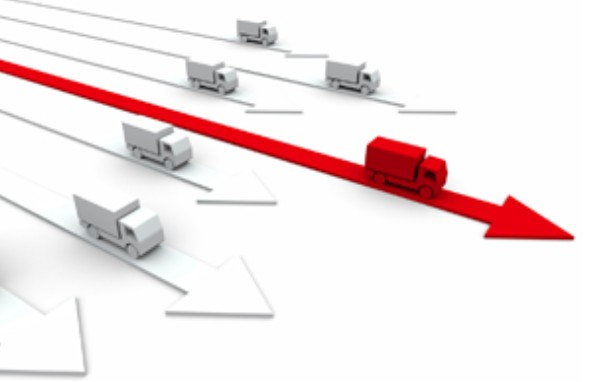Discover how modern logistics teams are reshaping tendering, from manual calls to smart automation that keeps carriers, shippers, and brokers connected in real time.
The Tendering Tangle
Load tendering used to mean juggling emails, rate sheets, and phone calls, sometimes all before breakfast. For most brokers and shippers, that chaos still exists in some form.
When time-sensitive freight needs to move, tender delays and miscommunication can cascade into missed pickups, detention, and lost trust.
That’s why more logistics operations are looking to automate load tendering, not to remove humans from the loop, but to let technology handle the repetitive grunt work, while people focus on relationships and exceptions.
The question isn’t if you should automate, it’s how to do it in a way that delivers speed, accuracy, and reliability.
Why Manual Load Tendering Still Hurts Your Operation
Before diving into automation, it helps to remember what’s broken today.
| Challenge | Impact on Operations |
| Email-based tenders get lost or delayed | Slower carrier response times |
| No uniform tender format | Higher error rates in carrier acceptance |
| Manual data entry | Mismatched shipment details, rate confusion |
| Lack of visibility | Difficulty tracking tender acceptance or rejection |
| Limited carrier feedback | No insight into capacity or pricing patterns |
When a dispatcher or broker has to chase updates manually, they’re not optimizing, they’re firefighting. And in today’s freight market, that’s a cost you can’t afford.
Read more:The Evolution of the Digital Freight Broker: Why Tech Skills Are the New Currency
The New Reality: Freight Automation Takes the Wheel
In 2025, automated load tendering isn’t just a tech buzzword, it’s a survival move.
Leading logistics teams use automation to eliminate friction between TMS, carrier portals, and dispatch systems.
Here’s how automation transforms the process:
- Instant load assignment: The TMS automatically matches a shipment to preferred carriers based on past performance, rates, and availability.
- Digital tender dispatch: Load details are sent directly through EDI or API, no emails required.
- Smart auto-acceptance rules: Carriers can pre-set criteria to automatically accept tenders that fit their parameters.
- Real-time tracking: Once the load is accepted, the system starts live tracking and updates without manual follow-up.
This creates a continuous digital handshake between shippers, brokers, and carriers, with zero lag.

Read more: What Is Predictive Analytics in Logistics: Turning Load History into Actionable Insights
Building an Automated Tendering Framework
To automate load tendering effectively, three things must align:
data, systems, and relationships.
1. Clean Data Fuels Smart Automation
Automation can’t fix bad data. Before anything else, ensure your shipment templates, carrier details, and lane histories are accurate. That’s what allows the system to recommend the right carrier, price, and timing automatically.
Think of it like teaching your TMS what “good freight” looks like.
2. Integrate Your Systems, Don’t Patch Them
The best automation works across your tech stack. Your TMS should connect with carrier portals, accounting systems, and visibility platforms.
For instance, an API connection with a visibility tool ensures the carrier’s acceptance triggers tracking instantly, no separate setup or email chase.
Read more:
3. Retain the Human Override
Automation isn’t a replacement for judgment. When exceptions or sensitive shipments occur, your team must be able to override or manually assign loads.
Smart tendering systems make human-in-the-loop options seamless, one click to pause automation, assign manually, and then resume.
Metrics That Prove Automation Works
Once you automate load tendering, the difference is measurable.
| Metric | Manual Average | Automated Average |
| Tender-to-Accept Time | 45–60 minutes | 5–10 minutes |
| Load Acceptance Rate | 65–75% | 90–95% |
| Data Entry Errors | 8–12% | <2% |
| Dispatching Time Per Load | 15 min | 3 min |
| Carrier Satisfaction | Medium | Very High |

The data shows a simple truth, speed and visibility don’t just make life easier; they directly reduce costs and improve service reliability.
FTM’s Role: Turning Load Tendering Into a Single-Click Process
For teams ready to take tendering to the next level, FTM brings automation and control under one roof.
With FTM, you can:
- Digitally broadcast tenders to pre-qualified carriers.
- Set intelligent rules for automatic acceptance.
- Track and analyze every tender response.
- Gain predictive visibility on capacity trends.
It’s not just faster, it’s smarter. FTM bridges the gap between automation and adaptability, so logistics teams can focus on what matters most: exception management and customer relationships.
Read more: Top Integrations to Improve Real-Time Shipment Visibility
The Tendering Revolution Is Already Here
The future of tendering isn’t about eliminating people, it’s about empowering them with automation that handles the heavy lifting.
By adopting tools that automate load tendering, you’ll not only save hours but also turn data, visibility, and efficiency into competitive advantages.
The logistics leaders of tomorrow aren’t the ones with the biggest fleets, they’re the ones who work smarter than everyone else.
Book a free demo with FTM today, and discover how automation can transform your tendering process from reactionary to revolutionary.
